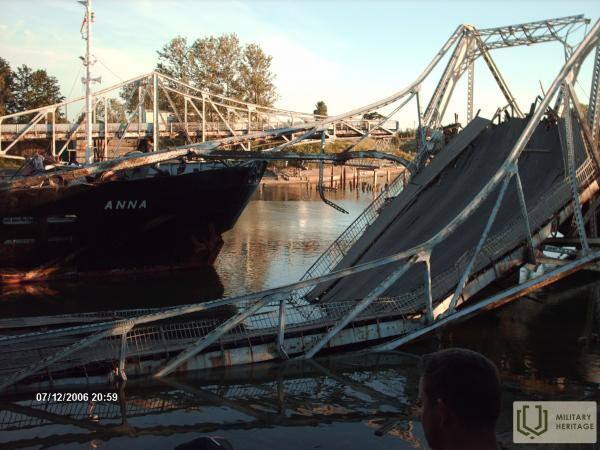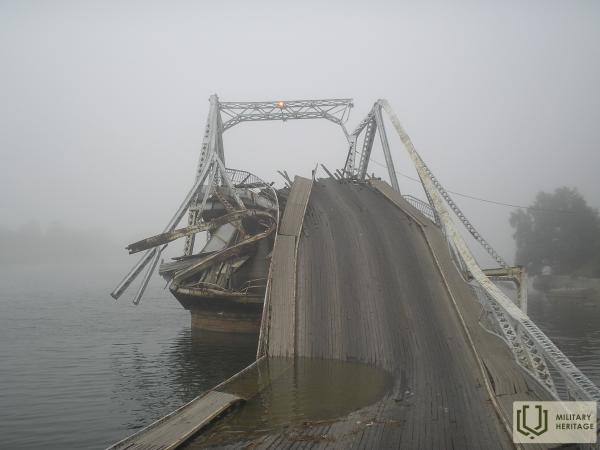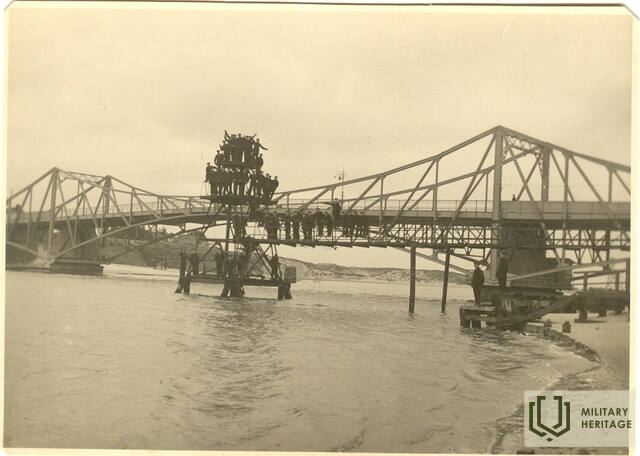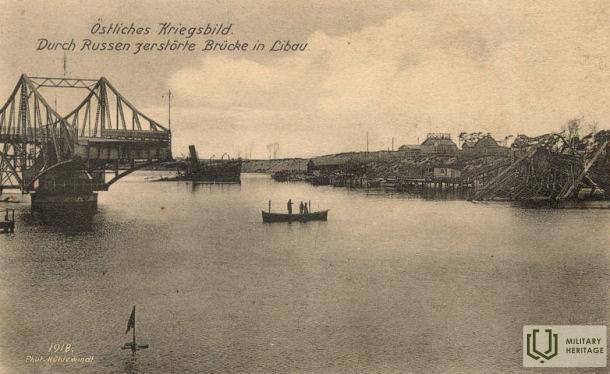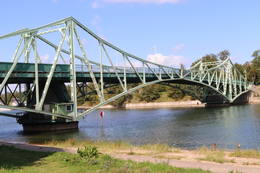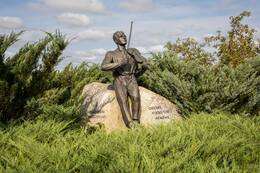O. Kalpako tilto istorija
Per daugiau nei 100 savo gyvavimo metų tiltas išgyveno du karus ir skirtingus savininkus, o tai turėjo įtakos jo eksploatacijai. Tiltas buvo susprogdintas per Pirmąjį pasaulinį karą, tačiau po karo atstatytas, o 1926 m. jį vėl apgadino garlaivis „Narne“. Tiltas buvo atstatytas dar kartą, tačiau nukentėjo ir Antrojo pasaulinio karo metu, kai įsiveržusi sovietų armija apšaudė Liepojos uostą.
„Saulėtą 2006 m. liepos dieną, prieš pat Kalpako tiltą, įvyko tragedija. Iš Karostos išplaukęs tanklaivis „Anna“ su Gruzijos vėliava ant stiebo rėžėsi į šiaurinę atviro tilto dalį. Liudininkai pasakoja, kad laivas akimirką stovėjo nejudėdamas. Denyje nepasirodė nė vienas laivo įgulos narys. Tada staiga ėmė greitai suktis sraigtas, piktai maišydamas vandenį, ir „Anna“ lėtai pradėjo judėti atbuline eiga. O tada laivas padidino greitį ir, lyg beprotis, vėl rėžėsi į tiltą. Išpjautų dalių metalinės konstrukcijos įtrūko, o girgždanti tilto dalis buvo nustumta nuo atramos.“
„Tai, kas įvyko, buvo tikra tragedija Karostos gyventojams, kurie dvejus metus turėjo keltis bent valanda anksčiau ir važiuoti į darbą daug ilgesniu maršrutu, o mokiniai į mokyklą, kuri buvo visai šalia tilto, turėjo važiuoti autobusu.“
Susijusi laiko juosta
Susijusios temos
Susijusios vietos
Oskaro Kalpako tiltas Karostoje
Oskaro Kalpakos vardu pavadintas tiltas yra Liepojos vartai į Karostą ir yra Oskaro Kalpakos ir Atmodos gatvių sankryžoje – kitoje Karostos kanalo pusėje.
Unikalus pasukamasis tiltas buvo atidarytas 1906 m. rugpjūčio 19 d. Tiltas buvo susprogdintas Pirmojo pasaulinio karo metu, tačiau po karo atstatytas. Tiltas buvo atstatytas po to, kai 1926 m. jį apgadino garlaivis „Narne“, tačiau jis nukentėjo ir Antrojo pasaulinio karo metu, kai įsiveržusi sovietų armija apšaudė Liepojos uostą. Iki Latvijos Respublikos nepriklausomybės atkūrimo Karosta buvo uždara Liepojos teritorija, neprieinama net Liepojos gyventojams. Visa Karosta buvo karinis objektas, todėl eismą per tiltą visą parą kontroliavo sargybos postai. Pereiti per tiltą į Karostą buvo galima tik gavus specialius leidimus kelias valandas per dieną, likusį laiką tiltas buvo atviras sovietinių karo laivų eismui. Visus okupacijos metus tiltas buvo vadinamas „Raudonosios armijos tiltu“. 2006 m. vasarą į šiaurinę tilto atramą įskrido tanklaivis su Gruzijos vėliava „Anna“, o po rekonstrukcijos Oskaro Kalpakos tiltas oficialiai atidarytas 2009 m. rugpjūtį.
Tiltas sveria 300 tonų ir susideda iš dviejų dalių (šiaurinės ir pietinės pusių), pagamintų iš dviejų identiškų konsolių. Tilto važiuojamosios dalies plotis yra 7,3 metro, o platforma – iš medinių lentų. Bendras tilto ilgis – 133 metrai, o tarpatramis – 27,55 metro + 77,9 metro + 27,55 metro. Tilto aukštis virš vandens lygio – 8,32 metro. Tiltas kertamas nustatytu laiku, ir, vadovaujantis Uosto saugos taisyklėmis, laivas gali pradėti eismą tik tada, kai tiltas yra atidarytas laivų eismui ir yra saugu įplaukti į Karostos kanalą arba išplaukti iš jo. Oskaro Kalpakos tiltas laivų eismui grąžinamas 5 kartus per dieną. Tiltas nustatytu laiku nekertamas, jei vėjo greitis viršija 10 m/s arba jei neplanuojami manevrai.
Pulkininko Oskaro Kalpako „Liepsalos“ gimtinė ir amžinojo poilsio vieta Visagalo kapinėse
Pulkininko Oskaro Kalpako šeimos memorialas Liepsaluose yra Maduonos ir Lubano ežero teritorijoje. Liepsalas yra Kalpako vaikystės namai. Memorialinė vieta čia buvo įkurta 1997 m., remiantis pulkininko dukterėčios Ārijos Kalpako-Grundmanės (1922–2006) idėjomis ir panaudojant jos išteklius. Vietovėje eksponuojami įvairūs aplinkos objektai ir akmens skulptūros, turinčios simbolinę reikšmę, perteikiančios Latvijos etines ir patriotines vertybes. Didžiausiame pastate įrengta ekspozicija, skirta Latvijos nepriklausomybės karo istorijai ir 22 Latvijos laisvės metams (1918–1940). Visagalo kapinėse esantis Oskaro Kalpako paminklas, kurį sukūrė Kārlis Zāle ir Arnolds Dzirkals, buvo atidengtas 1927 m. Paminklą sudaro trijų figūrų kompozicija, kurios centre – senovės latvių karys, laikantis skydą ir kardą, o iš abiejų pusių – po krintantį karį. Skulptūrinės grupės papėdėje ant granito pagrindo įstrižai pritvirtinta bronzinė lentelė su išgraviruotu tekstu, įskaitant Edvardo Virzos Kalpaksui skirtą eilėraštį. Oskaras Kalpaksas mirė 1919 m. kovo 6 d. netoli Airytės, prie kelio iš Skrundos į Saldų.




